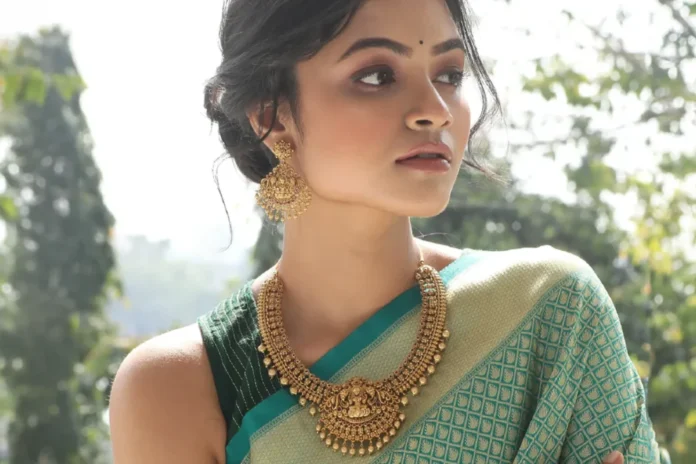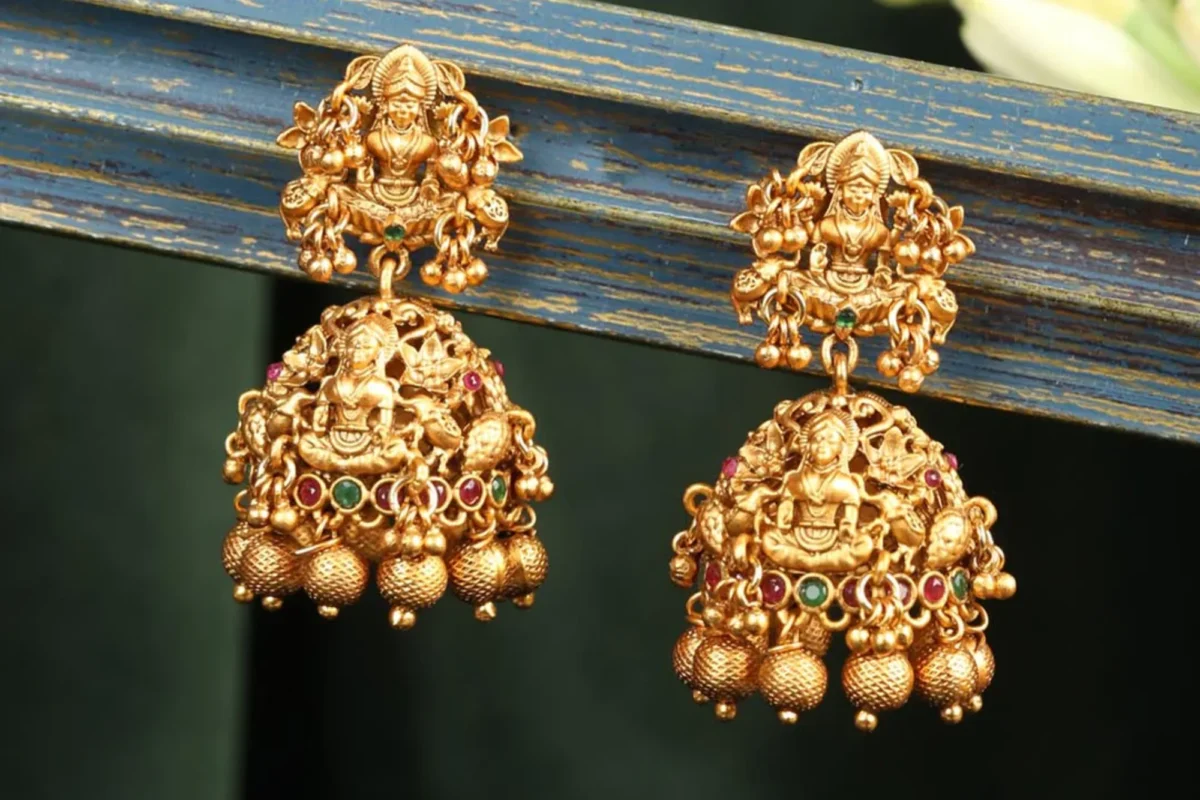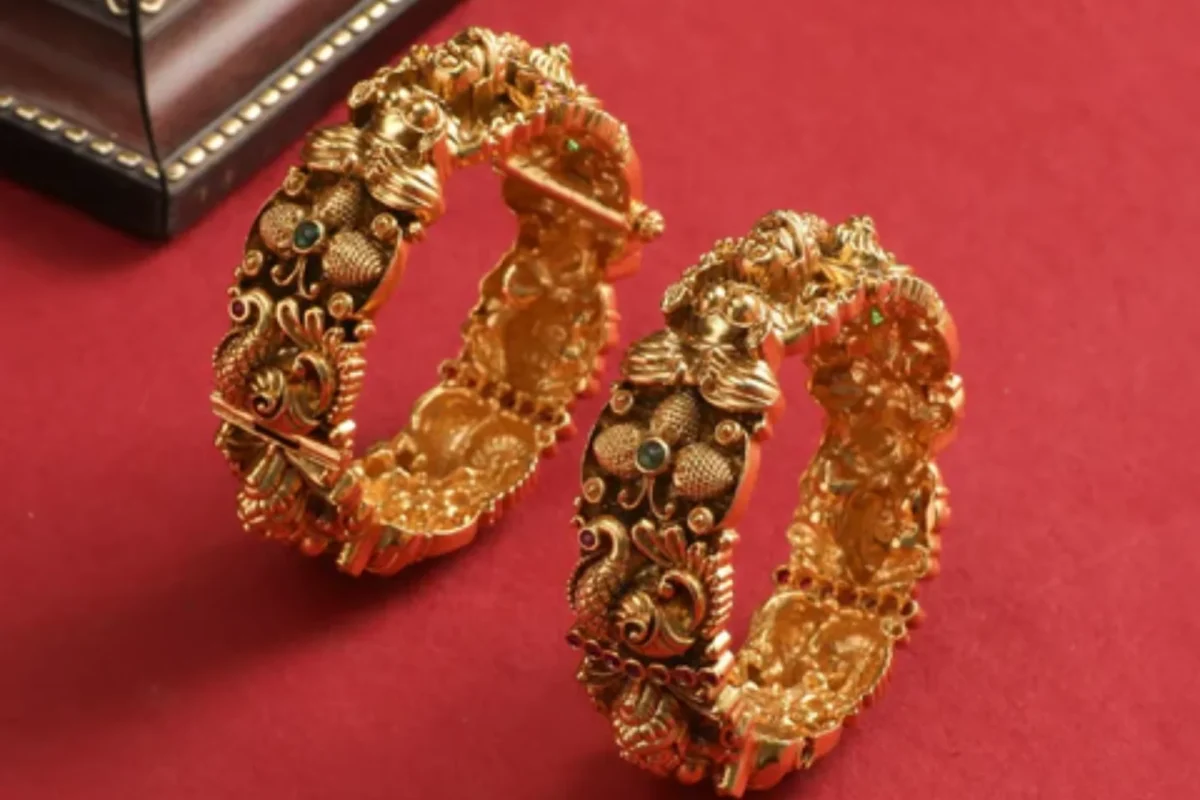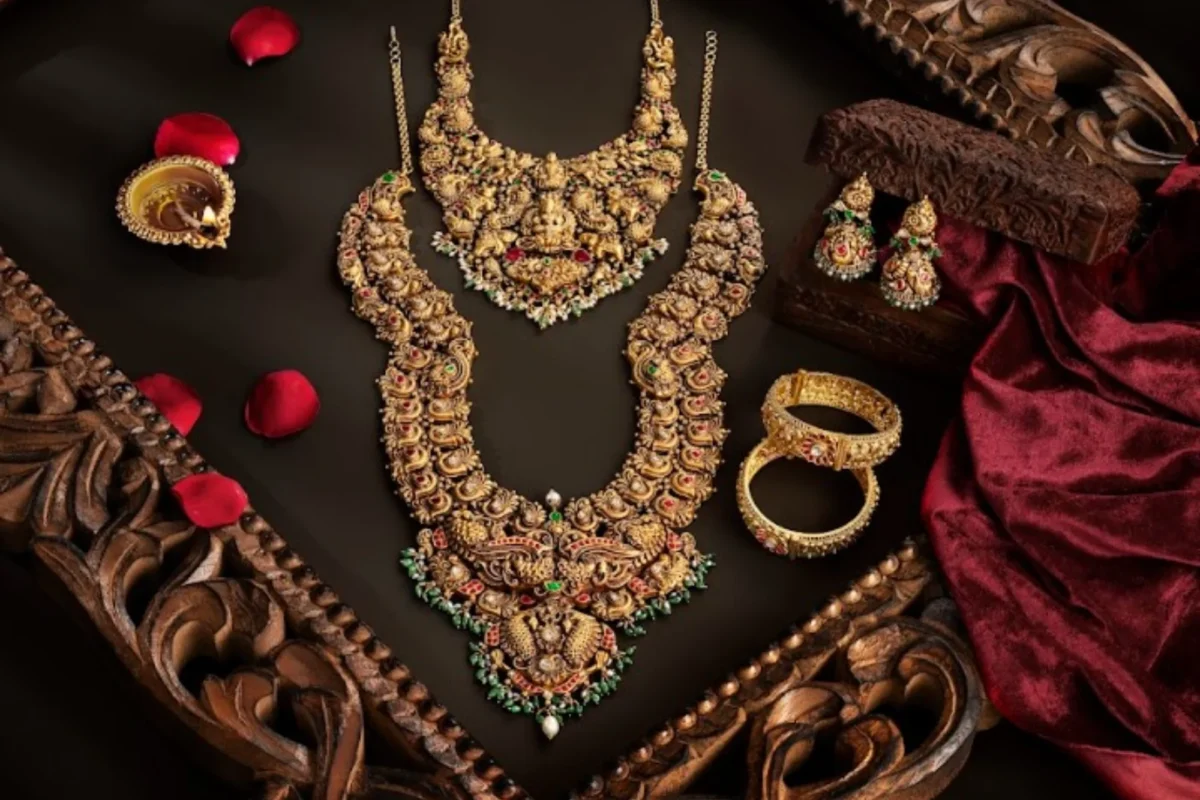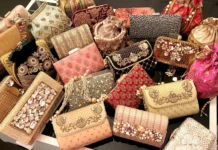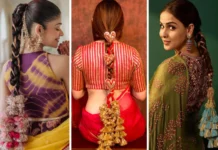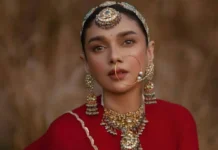Thinking about inviting divine energies to your special ceremonies? Think no further than majestic temple jewellery!
Temple jewellery is one of India’s greatest and spiritually richest forms of art, where religious devotion converges with sophisticated craftsmanship. These elaborate pieces, initially designed to embellish gods in South Indian temples, have exceeded their religious roots to become highly sought-after treasures in fashion and bridal jewellery today.
This definitive guide, created by our team at Wedding Affair, delves into the rich heritage, intricate patterns, complete forms, and lasting popularity of temple jewellery.
The Sacred Origins and Historical Heritage
Temple jewellery traces its origins to the ancient temples of South India, especially in Tamil Nadu, Karnataka, and Andhra Pradesh. As old as the 9th century, these decorative items were originally made to adorn temple gods during religious festivals and rituals. The tradition was initiated by the faith that covering gods and goddesses with stunning jewellery would attract their benevolence and bring prosperity to the devotees.
The Chola period (9th-13th centuries) was instrumental in propelling temple jewellery as an art form. This golden period saw expert craftsmen developing intricate items with elaborate work comprising detailed figures of Hindu gods and goddesses, mythological events, and religious symbols. These craftsmen, termed ‘Vishwakarma’ artisans, shared their skills from generation to generation, maintaining the purity and religious significance of temple jewellery.
Read Also: Enchanting Fall Wedding Decor Ideas
Unique Design Features and Sacred Symbols
Temple jewellery is easily identifiable by the typical design motifs that strike the balance between aesthetic brilliance and religious symbolism. The major feature is the generous presence of deity images, and in particular, images of Lord Ganesha, Goddess Lakshmi, Lord Krishna, and other major Hindu gods and goddesses. These tiny sculptures are intricately crafted with minute details, manifesting the skill of the metalworker.
Peacock designs are particularly significant in temple jewellery, representing grace, beauty, and spiritual connection. The regal bird, a representation of Lord Murugan and Goddess Saraswati, turns up in a range of forms from necklaces, earrings, to head jewels. The delicate feather designs and flowing neck contours of peacocks are executed with outstanding accuracy, resulting in pieces that are both spiritually significant and visually resplendent.
Lotus blossoms, symbolising divinity and purity, often adorn temple jewellery designs. Delicate flowers are often paired with foliage motifs and vine designs, resulting in organic compositions that appear to dance across the metal. The lotus also symbolises the unfolding of spiritual awareness, thus being especially suitable for religious adornments.
Mango patterns, or ‘paisley’ as they are called in Western cultures, are another signature element of temple jewellery. The teardrop-shaped mango patterns symbolise fertility, richness, and the cosmic egg from which all creation is born. In clusters, mango patterns produce rich, textured surfaces that catch and reflect light exquisitely.
Types of Temple Jewellery
Necklaces and Neck Ornaments
Choker Necklaces (Attigai)
The temple necklace style choker fits tightly on the neck, forming a king-like collar effect. They usually have continuous chains of deity figures, floral patterns, or geometric designs. The pendant in the middle usually has a visible deity, such as Goddess Lakshmi or Lord Ganesha, surrounded by smaller ornaments. Chokers also make popular bridal set choices because they form a visible canvas to layer other things on top of.
Long Chain Necklaces (Haaram)
These scenarial necklaces can reach from the chest to just below the waist and display rich pendant work as well as complicated chain patterns. Temple necklaces, which are longer in nature, tend to relate entire mythological narratives through sequential depiction of the deities. The chains themselves could include temple bells, which, with movement, make soft sounds that were traditionally used to signal the arrival of temple dancers.
Multi-Layered Sets (Chandrahaaram)
Most likely the most dramatic type, these sets feature several necklaces of different lengths being worn together. They produce a cascading appearance of gold and jewels, with every tier having different designs and patterns. The first tier would be a choker, followed by medium-length strands, and finished off with a statement long necklace.
Temple Coin Necklaces (Kasu Mala)
These contain gold coins with different deities, threaded together to form flexible, glittering necklaces. Every coin is designed separately with intricate deity figures and can carry religious inscriptions or sacred emblems. The coins can either be of uniform size or graduated, producing varying visual effects.
Earrings
Ear Cuffs (Maatal)
These intricate ornaments go beyond the common earrings to encircle the whole ear. With multiple points of attachment and sometimes including chains falling over the ear, maatal earrings give a showy, temple-dancer look. They typically feature peacock designs and multiple dangling features.
Temple Stud Earrings (Pulinagaram)
Less elaborate than the temple jewellery drama, temple stud earrings have a single deity icon or flower motifs in small designs. No larger in size, they still carry the usual detail and religious meaning of more extensive temple jewellery.
Arm Ornaments
Vanki (Upper Arm Bands)
These curved arm adornments are made to wrap around the top of the arm, with intricate deity designs and, in many cases, flexible components that enable free movement. Classic vankis may have Goddess Lakshmi or other goddesses depicted, representing femininity and divine feminine power. They’re mostly worn on both arms during ceremonial events.
Temple Bangles (Kappu)
Stiff circular bracelets with uninterrupted temple motifs along the circumference. These also narrate full mythological narratives as they wrap around the wrist, with scenes merging into each other without interruption. The inner faces are usually smooth and comfortable to wear on a daily basis.
Hair Ornaments
Hair Pins (Jadanagam)
Fine pins with small deity images or flower patterns, which are meant to be distributed across intricate hairstyles. These adornments provide light temple jewelry touches to hair sets without weighing the look. They’re quite in demand for classical dance performances and age-old ceremonies.
Forehead Pieces (Nettichutti)
Worn around the hairline, these adornments consist of central deity medallions surrounded by radiating ornamentation. They sometimes contain chains or hanging components that circle the face, giving an otherworldly, goddess-like effect. The central deity is most often Goddess Lakshmi or other female divine beings.
Hair Chains (Jadai Nagam)
Long, pliable chains made to be woven in braided hair or draped around hair. These items usually end in small figures of deities or in tassels, which provide movement and shine to classical hairstyles. They’re a crucial part of classical South Indian bridal attire.
Crown-Style Pieces (Rakodi)
Exalted headpieces worn on the head like crowns, with several figures of deities, architectural features, and often including symbolic motifs of temple structures. These are generally reserved for the most formal situations and bridal attire.
Body Chains and Ornaments
Waist Chains (Oddiyaanam)
These items go around the waist, having deity medallions joined together by ornamental chains. Classical waist chains usually come with functional features such as miniature mirrors or small bells, both for decorative and utilitarian functions in traditional dance performances. They are supposed to beautify feminine elegance and divine power.
Hip Chains (Kambandha)
Longer and more intricate than waist chains, these pieces sit on the hips and could have cascading pieces that fall elegantly with walking. They have larger deity pendants and heavier chain work, which creates dramatic shapes under traditional saris.
Read Also: Destination Wedding Spots for That Dream Golden Hour Wedding
Regional Variations and Distinctive Styles
Various areas in South India have produced their own unique styles of temple jewellery, depending on the local artistic impulses and cultural inclinations. Tamil Nadu temple jewellery is notable for its rich, elaborate styles, including large deity pendants and liberal employment of Kemp stones. The jewellery typically includes classical Tamil poetry and religious shlokas in its adornments.
Karnataka’s style, specifically from Mysore, is more subtle and elegant in design. These items include smaller, more detailed deity figures and exhibit influence from the art traditions of the Vijayanagara empire. The goldwork is generally quieter, letting the inherent beauty of metal and stones dominate.
Andhra Pradesh temple jewellery features the most distinctive regional themes, such as images of local gods and goddesses and traditional dances like the Kuchipudi. The motifs tend to be complemented with architectural designs inspired by the state’s renowned temples, giving the pieces a miniature replica of holy places.
Kerala temple jewellery, though less prevalent, bears characteristic boat-shaped motifs indicative of the state’s sea-faring tradition. Such pieces may use signs portraying the sea and monsoon, thus blending spiritual and natural themes in a new way.
Proper Care and Maintenance
Regular maintenance is needed in order to keep the longevity and beauty of temple jewellery. High gold content makes the pieces quite resistant to tarnishing, but cleaning them frequently keeps them shiny. Soft brushes and soap are used to clean them gently without causing damage to finer details.
Storage must be given special care, especially for items with multiple parts or elements that tend to dangle. Separate pouches or compartments save scratching and tangling, as well as keep Kemp stones securely set. Every few years, professional inspection and maintenance ensure any structural problems are found and corrected before they develop into serious issues.
Styling and Occasion Guidelines
Temple jewellery provides phenomenal versatility in styling possibilities, which can be used for anything ranging from large weddings to close-knit cultural events. Traditional South Indian weddings are best served by complete sets providing the most authentic and striking appearance. This would usually consist of several layers of necklaces, ornate earrings, armlets, waist chains, and hair pieces.
For religious ceremonies and cultural festivals, carefully chosen pieces will do to develop proper appearances without needing complete traditional outfits. A single statement neck piece accompanied by earrings of the same hue usually makes enough temple jewellery impact without compromising convenience and comfort.
Modern fashion incorporates temple jewellery items into everyday wardrobes, coupling the traditional ornaments with fusion wear or even Western attire for cultural occasions. The trick lies in balancing respect for the cultural heritage of the pieces while adjusting them to fit individual style.
Read Also: Are Gen Z Wedding Trends Changing the Indian Wedding Scene?
As we continue to evolve in an ever-more globalised world, temple jewellery stands as a stunning bridge between past and present, enabling contemporary wearers to connect with timeless traditions while asserting personal style.

